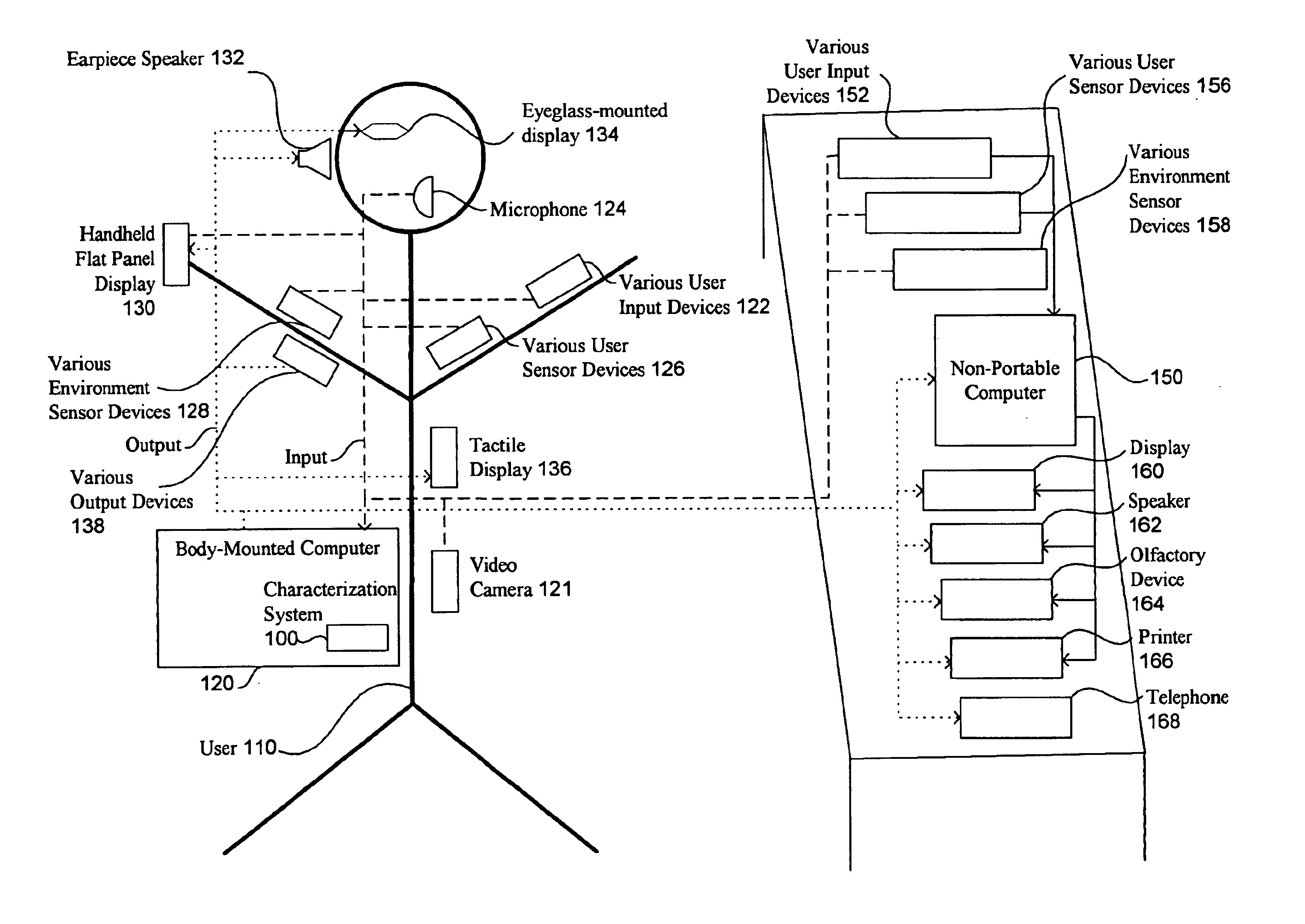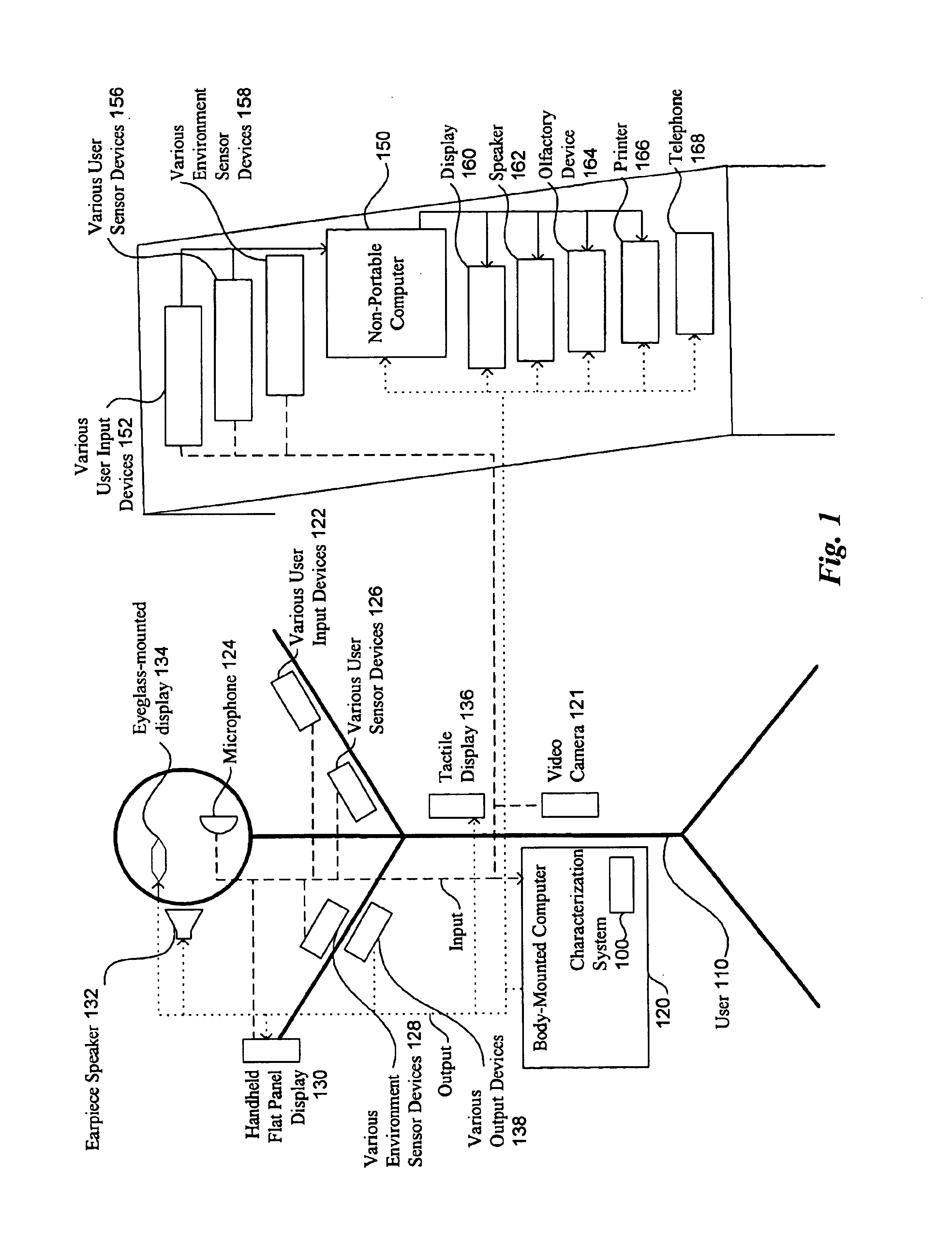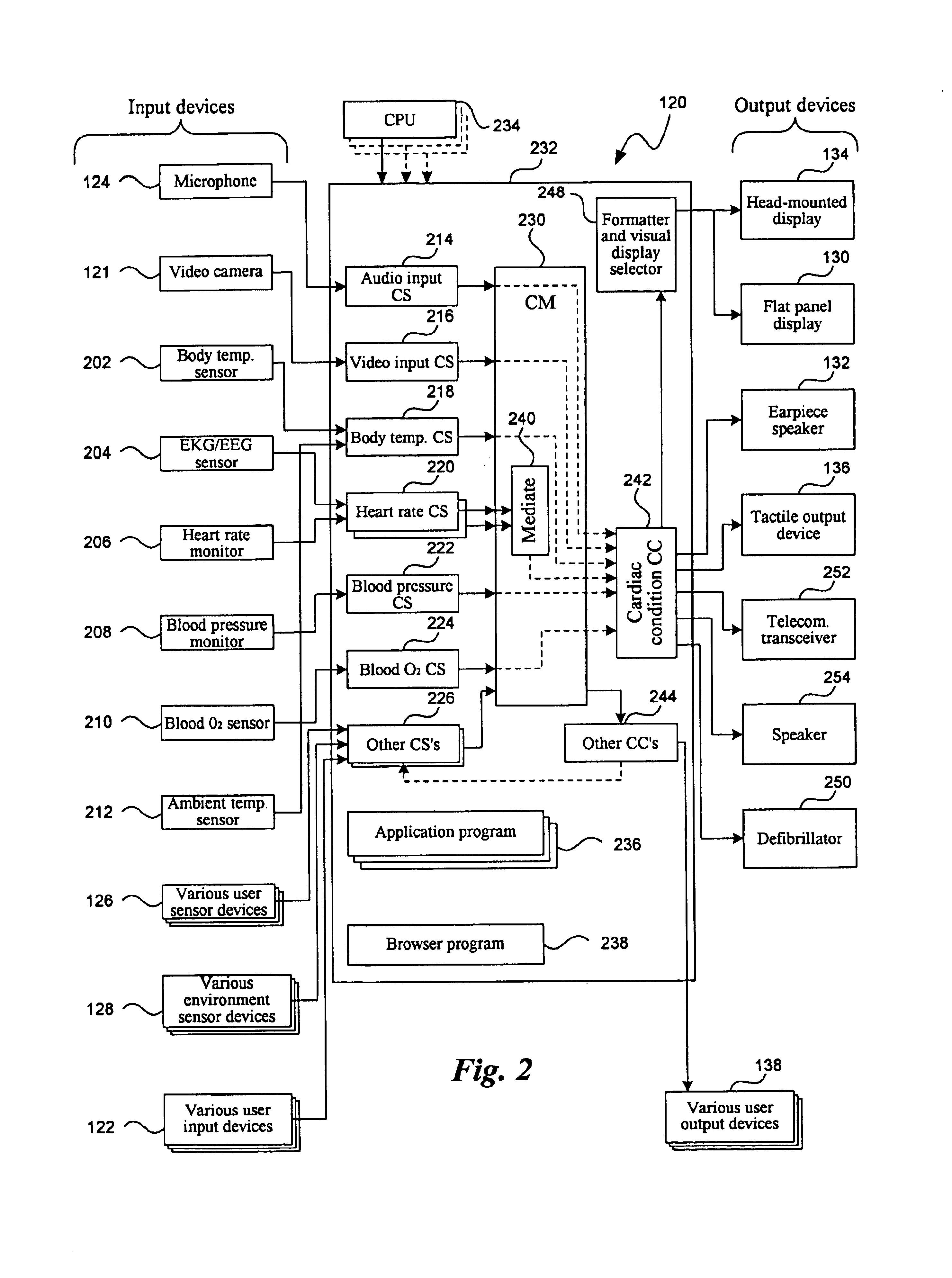Contextual responses based on automated learning techniques
a learning technique and context technology, applied in the field of context response based on automated learning techniques, can solve the problems of not being optimal for the specific context, unable to accurately reflect the overall condition or context of the user, and effectively responding to only a limited number of changes in parameters
- Summary
- Abstract
- Description
- Claims
- Application Information
AI Technical Summary
Benefits of technology
Problems solved by technology
Method used
Image
Examples
example
Cardiac Condition Context Client and Associated Context Servers and Attributes
Referring to FIG. 2, a more detailed block diagram of an embodiment of the computer 120 and of the characterization system 100 is shown. In particular, FIG. 2 shows an example of a set of input devices, context servers, and associated attributes that employ a cardiac condition thematic attribute set to characterize the user's cardiac condition. The theme of the attribute set employed under the example of FIG. 2 is thus the cardiac condition of the user. A cardiac condition client then employs the cardiac condition attribute set to model a current cardiac condition of the user, where such a condition could not be directly measured from any of the attributes individually.
In the illustrated embodiment, the computer 120 receives input from not only the microphone 124 and video camera 121, but also from a body temperature sensor 202, EKG / EEG sensor 204, heart rate monitor 206, blood pressure monitor 208, blood ...
PUM
 Login to View More
Login to View More Abstract
Description
Claims
Application Information
 Login to View More
Login to View More - R&D
- Intellectual Property
- Life Sciences
- Materials
- Tech Scout
- Unparalleled Data Quality
- Higher Quality Content
- 60% Fewer Hallucinations
Browse by: Latest US Patents, China's latest patents, Technical Efficacy Thesaurus, Application Domain, Technology Topic, Popular Technical Reports.
© 2025 PatSnap. All rights reserved.Legal|Privacy policy|Modern Slavery Act Transparency Statement|Sitemap|About US| Contact US: help@patsnap.com



